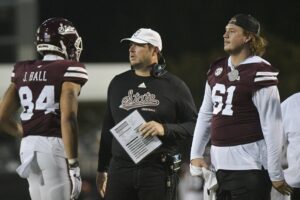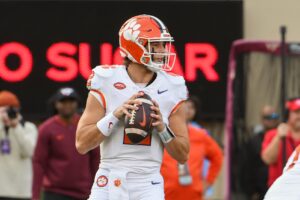Last week, we wrote generally that the NCAA will explore compensation for use of student-athletes’ name, image, and likeness (“NIL”). As promised, we plan to consider the various questions that arise with NIL compensation over a series in the coming weeks and months. Perhaps the most important issue to consider, however, is this: Who will pay student athletes for use of their NIL? The question has wide-ranging implications, and there are essentially three broader possibilities here. Either the NCAA, the colleges, or private parties can pay athletes.
Who Will Pay Student Athletes?
Why Might The NCAA Pay Student Athletes?
At least one idea worth exploring is the possibility that the NCAA would be involved directly in payment of student athletes for their NIL. In its recent press release, the NCAA directed the divisions to search for solutions consistent with the traditional collegiate model. The NCAA places emphasis on competitive balance, integrity in recruiting, and protection and education of student-athletes, among other things.
These points of emphasis may very likely shift the NCAA to a system that substantially limits the impact third parties may exert over any part of the process of NIL compensation. The NCAA would like to resist the impact of agents, athletic apparel companies, big-money donors, and the like. The most efficient way to do so would be to reserve control over the NIL of the student athletes solely to the NCAA.
The Pros Of NCAA Control
Reserving such control would best foster the shared mission of the member institutions of the NCAA. This would allow the NCAA to receive and respond to inquiries from persons looking to license athletes’ NIL. The NCAA could then solicit input from the conferences and schools. This system would place a barrier between the sophisticated parties that would look to exploit and profit from use of athletes’ NIL. And it could also allow institutional control over and uniformity in the results.
Then, based on the interplay between the interests of student athletes, schools, and conferences, the revenue generated from players’ NIL can be funneled accordingly. This option will get plenty of airtime if consensus builds around the idea that the NCAA can and should limit individual athlete’s profit from NIL usage. How that plays out remains to be seen, of course. California’s “Fair Pay to Play Act” purposefully sets no limit on such compensation. But the ultimate solution will likely fall far short of such an open-ended solution.
The Cons Of NCAA Control
While this option might result in the most direct control over how revenues are collected and divided, the NCAA’s track record on “fairness” leaves much to be desired. As we wrote in our introductory article to this series, the running joke is that some smaller, mid-major school will always pay for the transgression of the blue bloods. The NCAA has also been so resistant for so long to the concept that it seems difficult to imagine that the NCAA might embrace the types of opportunities that would maximize NIL compensation to athletes.
Finally, if the NCAA exerts this level of control, it would no doubt retain a percentage of the intended compensation for two reasons. First, the NCAA would need to fund the added costs of a team managing these new contracts and the revenue generated therefrom. Second, the NCAA would have to address concerns over fairness (and maybe to an even larger extent, Title IX, which we will explore later in this series) by sharing NIL revenue among all qualifying athletes. Just how large would this hold-back be? And can student athletes and organizations fighting for NIL compensation really trust the NCAA to balance a “common fund” fairly?
Could Third Parties Pay Student Athletes Directly?
In answering our question about who will pay student athletes, we feel least confident that the NCAA would end up in that role. Complete deregulation of the issue stands on the opposite end of the spectrum. Under this scenario, the NCAA would simply allow student athletes to profit off of their NIL without any significant rules governing the mechanics of such compensation. And there are certainly many voices who feel this is the best result.
The Pros Of Zero Regulation
Zero regulation gives players the most control. Thus, the players who offer the most appeal to those most likely to operate in student-athlete NIL will be free to negotiate fair compensation. This approach best addresses the concerns of those who frame the issue as one of unjustifiable student-athlete exploitation. It also fosters best the individualism of the athletes.
A lack of NCAA or college control would allow the student athlete to navigate complex contract negotiations at their leisure. And if Nike is willing to sign a player like Zion Williamson while he is still playing in college, why should we place any limitations? The athlete gets what he wants. The party wanting to use the athlete’s NIL gets what it wants. And nobody has unduly interfered.
The Cons Of Zero Regulation
On the other hand, however, it seems a big task for teenage student athletes who are already balancing the rigors of school and athletics to add significant long-term contract negotiations to their mix. Granted, in the zero regulation world, players could hire agents, managers, and attorneys accordingly. And they would definitely want to do so. The NCAA at least pretends to facilitate student-athlete interests. Corporations have no such compass.
Additionally, in a world of zero regulation, it is entirely possible that a player like Zion Williamson, Tua Tagovailoa, or Trevor Lawrence earns millions of dollars while sharing dormitory, gym, cafeteria, and athletic facilities with teammates making nothing at all on their own NIL. How substantially could that destroy a team atmosphere? And what kind of risks would this introduce in the day-to-day lives of the elite athletes earning such a premium?
Finally, zero regulation seemingly would do very little to ensure continued competitive balance (though, as we will discuss in later entries in this series, this point is arguable). Sponsors and donors could buy national championships by collecting and paying enough funds to bring the best athletes to their preferred schools. The line between professional and college athletics could dissipate entirely.
Why Might Colleges Pay Student Athletes
Still one broad options remains to explore when determining who will pay student athletes. It seems unlikely that the NCAA will take on this role. And given the NCAA’s resistance to introducing too much professionalism and too many professionals into college athletics, it seems equally unlikely that a completely unregulated model will take hold. Allowing colleges to control this process may provide a tenable middle ground.
The Pros Of Institutional Control
Instead of allowing the NCAA to negotiate NIL contracts or usage, the role could revert to member institutions directly. The colleges could take on the role of decision-maker and money manager. In this system, each division would adopt general guidelines applicable to the mechanics of NIL compensation. Then, within each division, some rule-making authority would be reserved to the conferences. Finally, the conferences would relegate even more nuanced decision making to the schools. This would allow for a balance uniformity within the divisions with individual nuance between the member institutions.
Let’s take Brigham Young, for example. BYU’s leadership might consider certain NIL contracts to violate its mission statement. This model would allow them individual control over the rules governing BYU. And they could recruit athletes with its own guidelines known to potential targets. On the other hand, let us look at the Big Ten. Perhaps it wants to create a more unregulated environment with less limitation on the NIL contracts. Its members could vote accordingly. The Big Ten could create such an environment. And the Big Ten could recruit athletes that fit that model accordingly.
Allowing colleges to control the negotiation of NIL contracts, receive the money, and pay out the money would also allow colleges to maintain a level of control over the academic and athletic environments of its student athletes. It would also remove the burden of student-athletes to hire professionals to protect their interests during such negotiations.
The Cons Of Institutional Control
Colleges might be better suited to protect athlete interests than the NCAA. Nonetheless, member institutions still have their unique interests to advance. Presumably, tensions between the interests of the college and its student-athletes would be resolved in favor of the college. This would create the same potential flaws that exist with NCAA control. Who is really looking out for the athletes in this scenario? And why would those advocating for student athletes to control their NIL find this to be a fair compromise?
Additionally, allowing institutions to create individualized policies would invite widely diverging sets of rules. Schools could bury the effect of these rules within their pitches to the student athletes. And the diverging rules could impact athletes across a range of issues. Regardless, this level of control could introduce additional needless complexity into the college selection process for the student-athlete.
Who Will Pay Student Athletes?
We will pay close attention to the way the NCAA answers the question of who will pay student athletes. The answer will certainly bear greatly on the resulting mechanics of student athlete NIL compensation.






